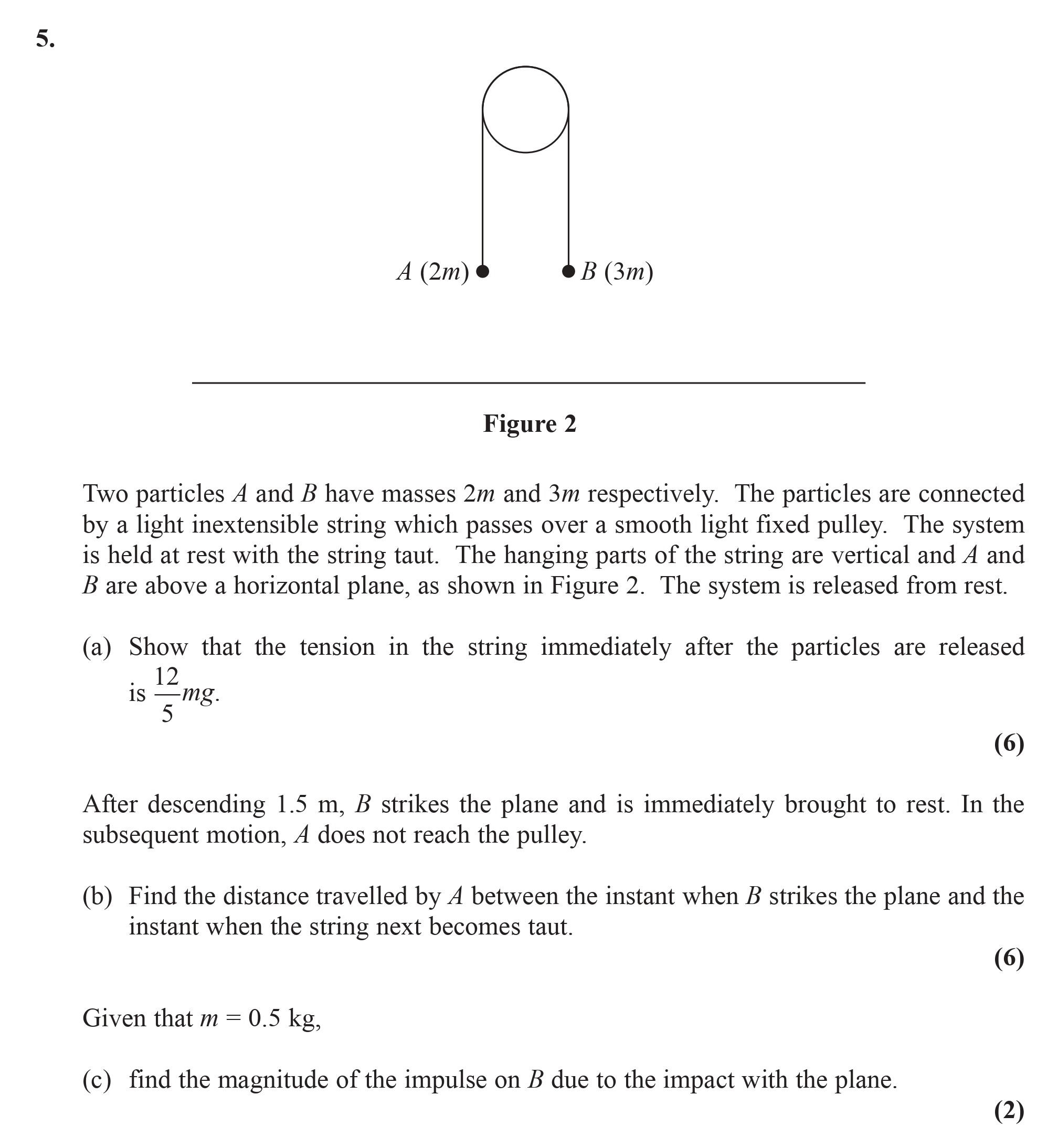Photo AI
Two particles A and B have masses 2m and 3m respectively - Edexcel - A-Level Maths Mechanics - Question 5 - 2014 - Paper 1
Question 5

Two particles A and B have masses 2m and 3m respectively. The particles are connected by a light inextensible string which passes over a smooth light fixed pulley. T... show full transcript
Worked Solution & Example Answer:Two particles A and B have masses 2m and 3m respectively - Edexcel - A-Level Maths Mechanics - Question 5 - 2014 - Paper 1
Step 1
Show that the tension in the string immediately after the particles are released is $\frac{12}{5}mg$.
Answer
To find the tension in the string immediately after the system is released, we can apply Newton's second law to both masses. For mass B (3m), we have:
For mass A (2m), considering its upward motion:
Since both masses accelerate at the same rate , we can set ( using the derived value for from the motion of B). Now substituting this into both equations:
- From mass B:
- From mass A:
Rearranging these equations:
Thus, the tension in the string is:
Step 2
Find the distance travelled by A between the instant when B strikes the plane and the instant when the string next becomes taut.
Answer
After B strikes the plane and comes to rest, A continues to move upward. To find the distance travelled by A, we use:
Using the formula for the motion:
t = \sqrt{\frac{2s}{g}}
Where . Thus the time taken by A to travel this distance is:
t = \sqrt{\frac{2 * 1.5}{g}} = 0.6 s
In this time, A travels additional distance using the formula:
d = ut + \frac{1}{2} a t^2 where the speed u can be calculated as:
d = 2 * \frac{g}{5} * (0.6)^2 = 0.3 m
So the total distance A travels becomes:
Step 3
Find the magnitude of the impulse on B due to the impact with the plane.
Answer
Impulse is given by the change of momentum.
Using:
where
- m = 3m (mass of B, with m = 0.5 kg)
- v = 0 (final velocity post impact)
- u = v (initial velocity at the moment just before impact)
The initial velocity can be calculated using:
So the magnitude of the impulse is:
